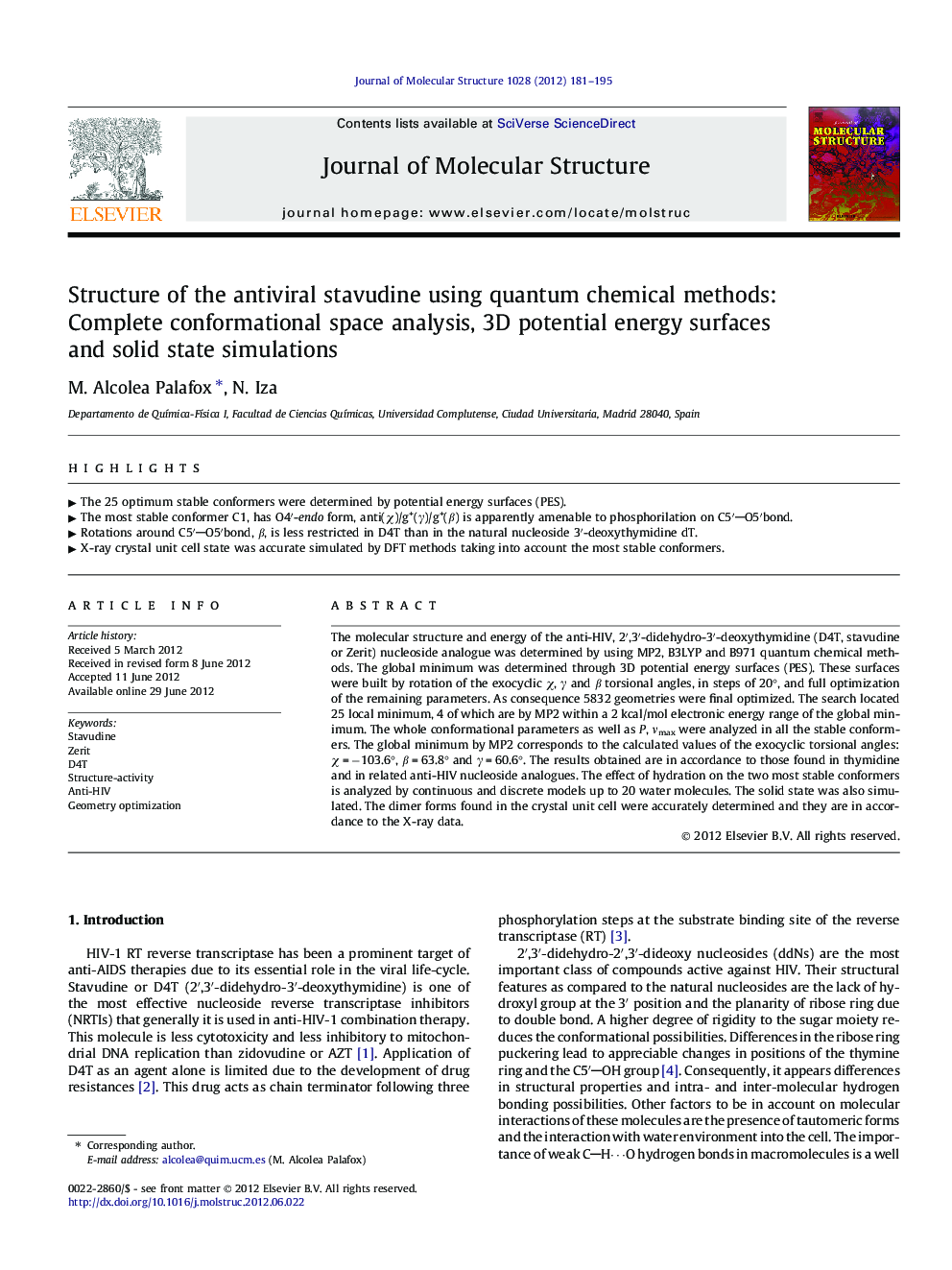| Article ID | Journal | Published Year | Pages | File Type |
|---|---|---|---|---|
| 1409043 | Journal of Molecular Structure | 2012 | 15 Pages |
The molecular structure and energy of the anti-HIV, 2′,3′-didehydro-3′-deoxythymidine (D4T, stavudine or Zerit) nucleoside analogue was determined by using MP2, B3LYP and B971 quantum chemical methods. The global minimum was determined through 3D potential energy surfaces (PES). These surfaces were built by rotation of the exocyclic χ, γ and β torsional angles, in steps of 20°, and full optimization of the remaining parameters. As consequence 5832 geometries were final optimized. The search located 25 local minimum, 4 of which are by MP2 within a 2 kcal/mol electronic energy range of the global minimum. The whole conformational parameters as well as P, νmax were analyzed in all the stable conformers. The global minimum by MP2 corresponds to the calculated values of the exocyclic torsional angles: χ = −103.6°, β = 63.8° and γ = 60.6°. The results obtained are in accordance to those found in thymidine and in related anti-HIV nucleoside analogues. The effect of hydration on the two most stable conformers is analyzed by continuous and discrete models up to 20 water molecules. The solid state was also simulated. The dimer forms found in the crystal unit cell were accurately determined and they are in accordance to the X-ray data.
► The 25 optimum stable conformers were determined by potential energy surfaces (PES). ► The most stable conformer C1, has O4′-endo form, anti(χ)/g+(γ)/g+(β) is apparently amenable to phosphorilation on C5′O5′bond. ► Rotations around C5′O5′bond, β, is less restricted in D4T than in the natural nucleoside 3′-deoxythymidine dT. ► X-ray crystal unit cell state was accurate simulated by DFT methods taking into account the most stable conformers.
